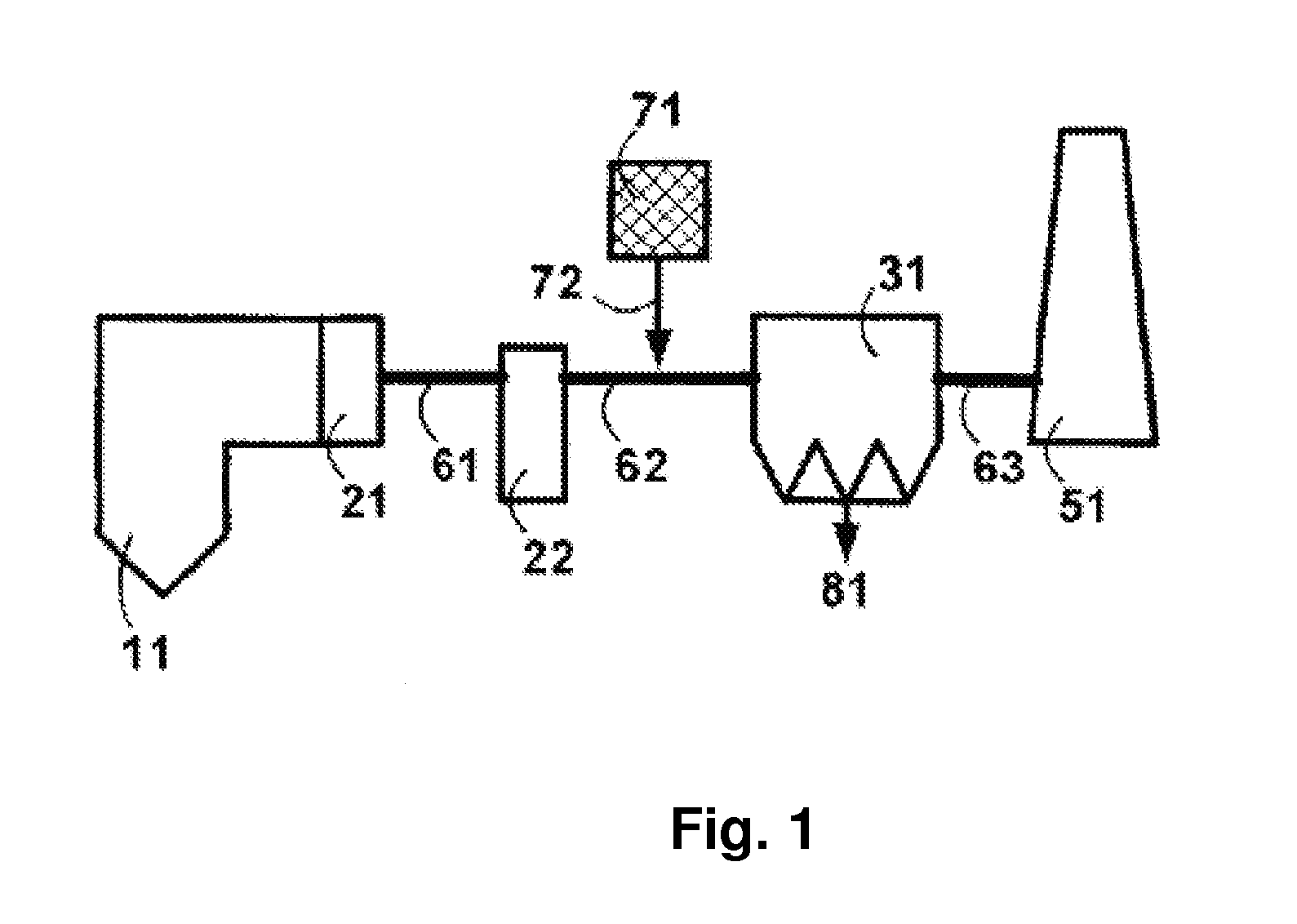Crosslinked Polymer-Carbon Sorbent for Removal of Heavy Metals, Toxic Materials and Carbon Dioxide
a cross-linked, carbon dioxide technology, applied in the direction of dispersed particle separation, other chemical processes, separation processes, etc., can solve the problems of difficult to capture and isolate gaseous, large quantities of mercury vaporizing, and difficulty in removing heavy metals from coal-fired power plants, etc., to achieve cost-effective effects
- Summary
- Abstract
- Description
- Claims
- Application Information
AI Technical Summary
Benefits of technology
Problems solved by technology
Method used
Image
Examples
examples
[0105]The following examples are presented to clarify, but not limit, the scope of the invention.
Materials
[0106]With the exception of activated carbon, all reactants and solvents were purchased from Aldrich Chemical Company, Milwaukee, Wis. Branched poly(ethylenimine)s (BPEI) having nominal number-average molecular weights (Mn) of about 10,000, 2,000 and 1,300, zinc diethyldithiocarbomate (ZnDEDC), orthorhombic sulfur, toluene and methanol were used as purchased. Allyl bromide was distilled prior to use. Dimethylacetamide (DMAC) was distilled over calcium hydride at reduced pressure.
[0107]Three activated carbons commercially used in flue gas treatment, (CAS #7440-44-0) were tested to compare with the sorbents of the invention. One activated carbon FLUEPAC®-MC Plus (CAS #7440-44-0) from Calgon Carbon Corporation, Pittsburgh, Pa. (CAC), and DARCO® Hg (DH) and DARCO® Hg-LH (DHL) from Norit Americas Inc., Marshall, Tex. The activated carbon tested in polymer-carbon sorbents of the inven...
example 1
Preparation of Curable Amine-Containing Polymers
[0117]Three different poly(ethyleneimines)s, (BPEIs), having nominal number average molecular weights of 1300, 2000, and 10,000 were selected as amine-containing polymers. They were each allowed to react with allyl bromide to form allyl-capped poly(ethyleneimine), ACP, as the curable amine-containing polymers.
[0118]The procedure for the 10,000 Mn follows as an example: 5.0 g (˜0.0005 mole) was weighed into a 150 mL beaker, and DMAC (50 mL) was added to the beaker, while stirring using a magnetic stir bar, to prepare a clear solution. A four-necked, round-bottomed flask, fitted with an overhead stirrer, nitrogen inlet, thermometer, and an addition funnel served as the reaction vessel. The BPEI solution was added to the reaction vessel. The beaker containing the polymer solution was washed with additional 20 mL of DMAC and the washing was added to the reaction vessel, followed by about 5.0 g (about 0.036 mol) anhydrous potassium carbonat...
example 2
Polymer-Carbon Sorbent Cure Temperature Study
[0126]DSC of uncured samples was used to determine a curing temperature for polymer-carbon sorbents at different sulfur levels. The samples were made from an ACP prepared from a PEI having a Mn of about 10,000. Thermograms from the DSC of uncured samples had broad endotherm curves, over a temperature range from 40 to 150° C. Endotherms of uncured samples had peaks ranging from 90 to 112° C., indicating cure temperature(s) for the samples.
[0127]Sample 2(a) was made using 100 parts ACP, 7 parts sulfur, 1 part ZnEDC, and 200 parts DHL. The DSC thermogram obtained prior to curing exhibited a curing endotherm peak at 111° C., with an activation energy of 92.27 J / g. After curing for 30 minutes at 111° C., an endotherm was not observed, indicating the completion of the curing process.
[0128]Sample 2(b) was made with 100 parts ACP, 13 parts sulfur, 1 part ZnEDC, and 200 parts DHL. The sample was cured at 92° C. for 15 minutes.
[0129]Sample 2(c) was...
PUM
| Property | Measurement | Unit |
|---|---|---|
| wt % | aaaaa | aaaaa |
| particle size | aaaaa | aaaaa |
| particle size | aaaaa | aaaaa |
Abstract
Description
Claims
Application Information
 Login to View More
Login to View More - R&D
- Intellectual Property
- Life Sciences
- Materials
- Tech Scout
- Unparalleled Data Quality
- Higher Quality Content
- 60% Fewer Hallucinations
Browse by: Latest US Patents, China's latest patents, Technical Efficacy Thesaurus, Application Domain, Technology Topic, Popular Technical Reports.
© 2025 PatSnap. All rights reserved.Legal|Privacy policy|Modern Slavery Act Transparency Statement|Sitemap|About US| Contact US: help@patsnap.com



